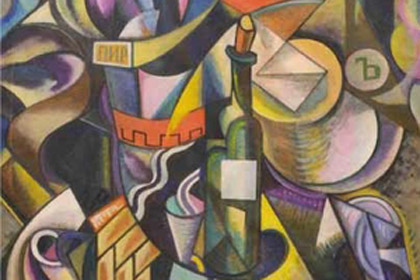Russian experts decry avant-garde artworks at Italian gallery as fake

Russian art experts have accused an Italian gallery of exhibiting fake works of art in their latest show of avant-garde paintings from Russia. The exhibition, Russian Avant-Garde: From Cubism to Suprematism, at the House of Mantua, has caused furore among Russian art historians, despite the fact that many of them have not seen the artworks in person. They nevertheless assert that a reading of the exhibition’s catalogue is enough to verify the art works as fake.
Andrei Sabaryanov, editor of the recently published first encyclopedia of the Russian avant-garde, told The Art Newspaper that the contents of the exhibition “do not instill confidence”. In addition to the chorus of Russian artists who have spoken out about the gallery’s counterfeits, London-based art dealer James Butterwick, a specialist in the collection of Russian avant-garde art, told the paper that, “each painting is unequivocally a fake”.
In the foreword to the exhibition’s catalogue, Gianfranco Ferlisi, one of the curators of the exhibition at The House of Mantua, wrote: “When you find a group of unknown works of art collected by a small group of collectors, it seems like a miracle. And it’s an even greater miracle because we believe that these works are pretty much the core of works of the Russian avant-garde.”
Following the cries of outrage from art specialists, Ferlisi defended the exhibition to The Art Newspaper, claiming that, “in our view, ‘Russian Avant-Garde’ is primarily a cultural context. The works come to us as precious relics salvaged from a shipwreck”.
Tatyana Goryacheva, a senior fellow of 20th century graphics at the State Tratyakov Gallery in Moscow, has commented on the growing problem of counterfeit works of Russian avant-garde art, attributing much of the problem to under-qualified experts who verify pieces without proper inspection. “Non-professional experts confirm fake artworks,” she said. “These works are thus legitimised and the practice becomes normal.” Lawyers have been involved in the exhibition, and although samples analysed by experts have suggested that some of the works may be genuine, the argument of the authenticity of the exhibition continues.
Source: The Art Newspaper Russia